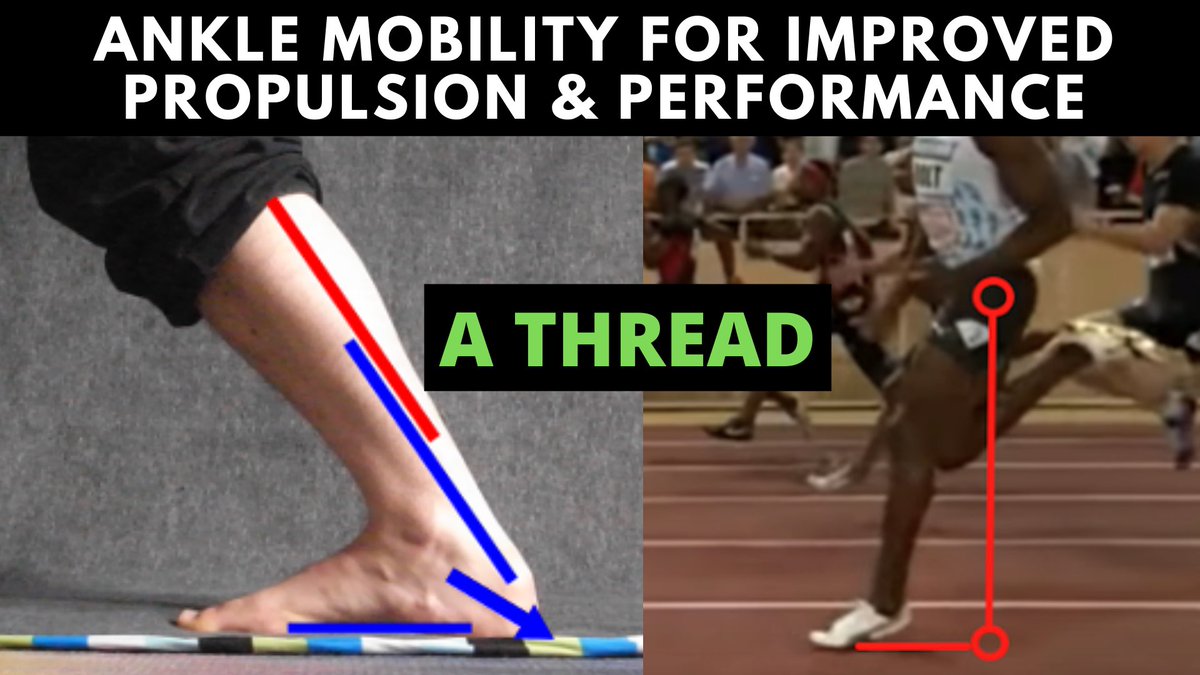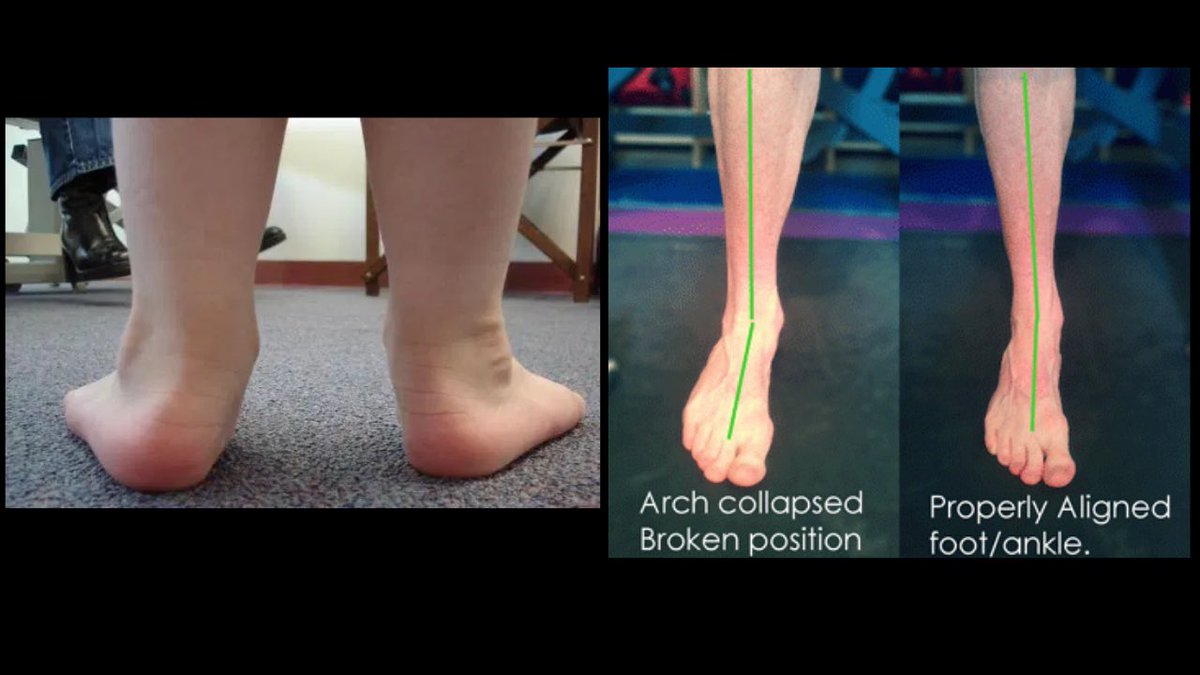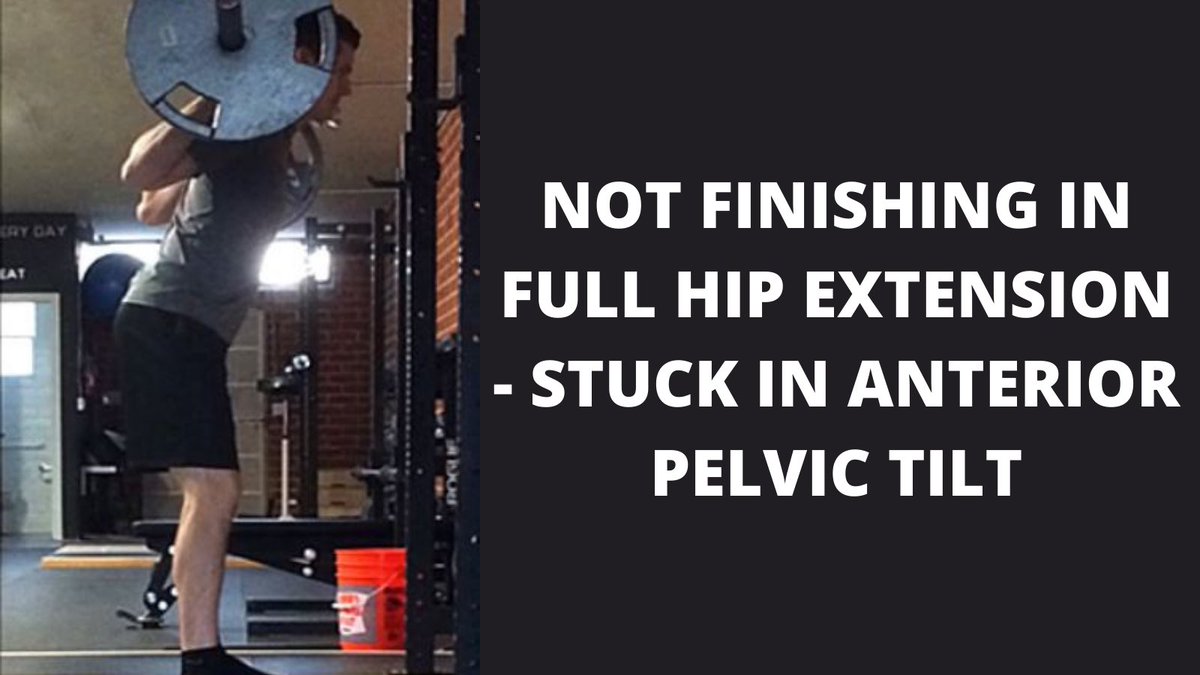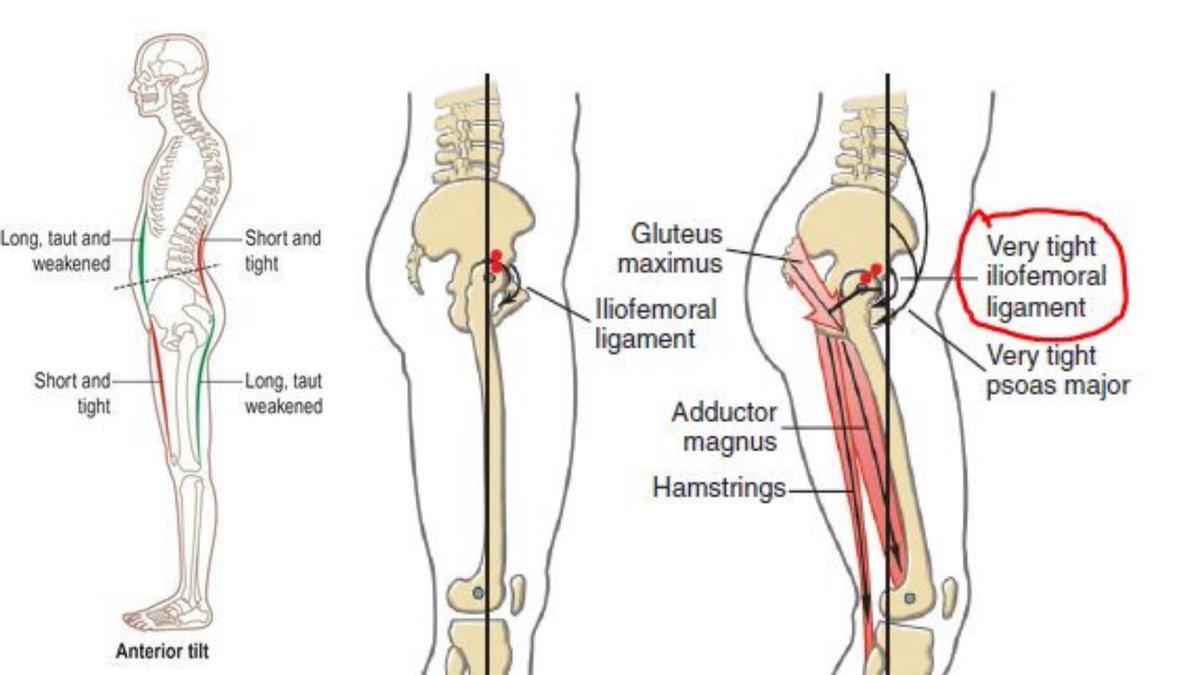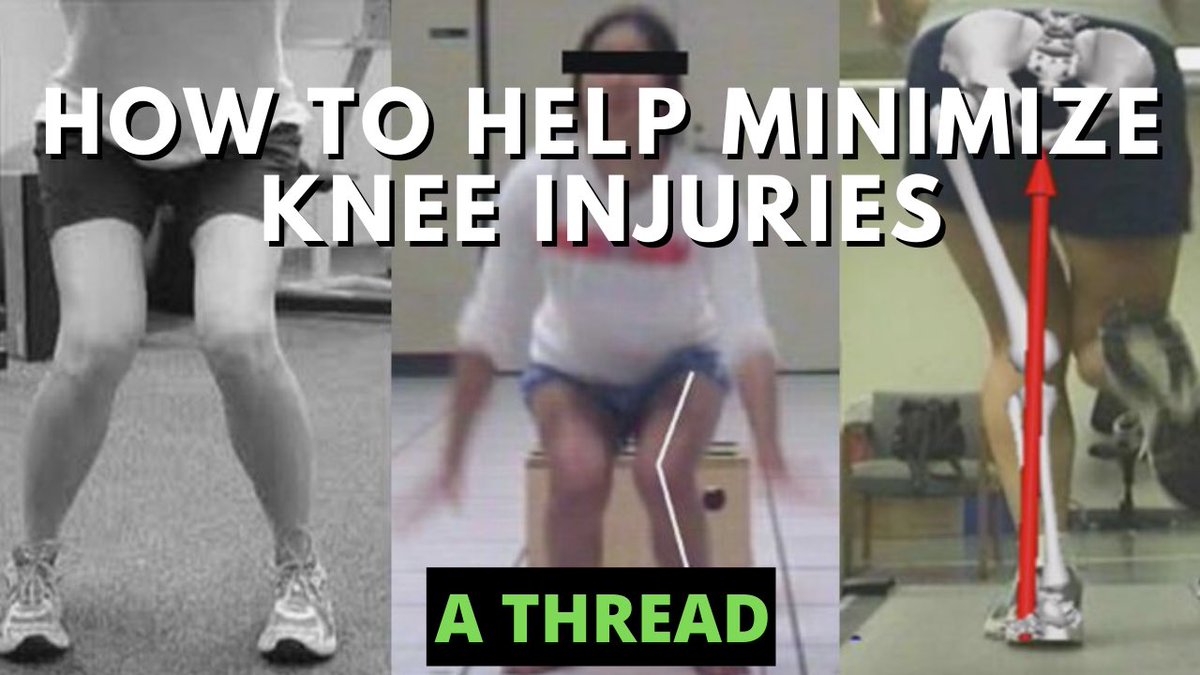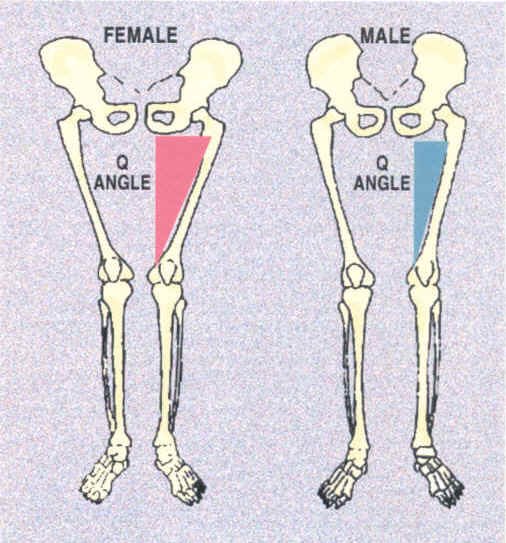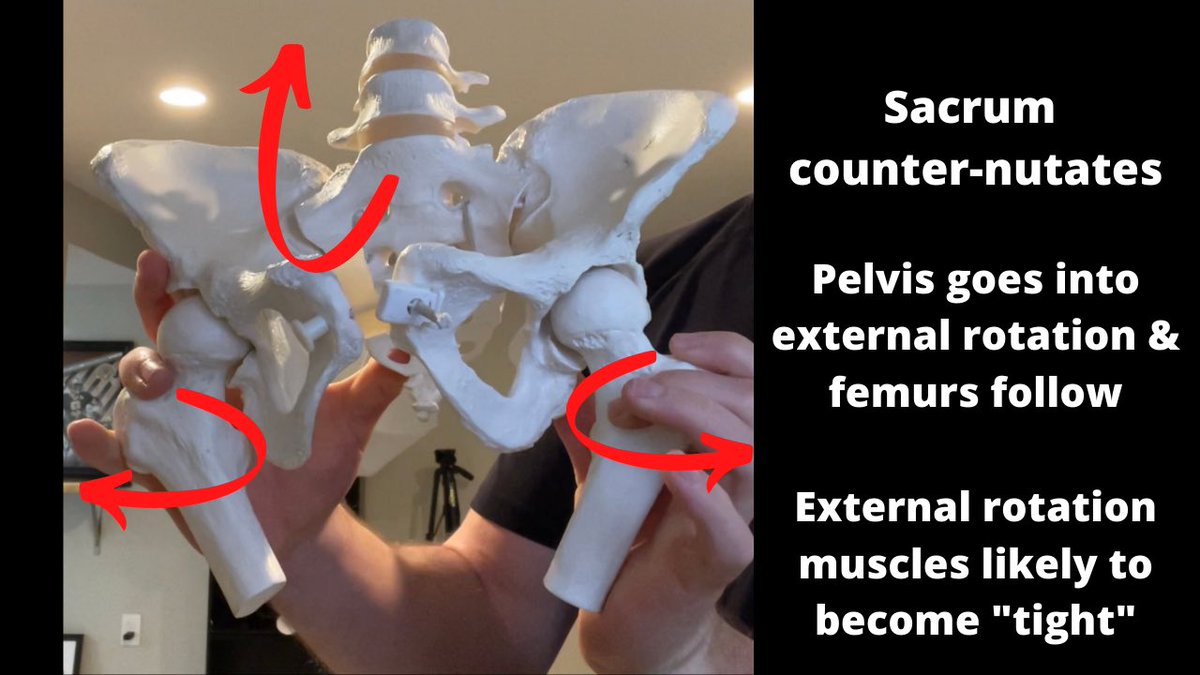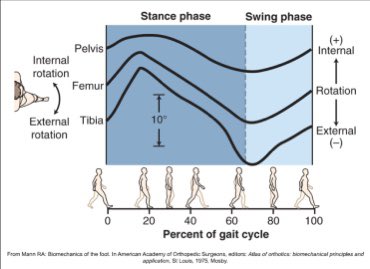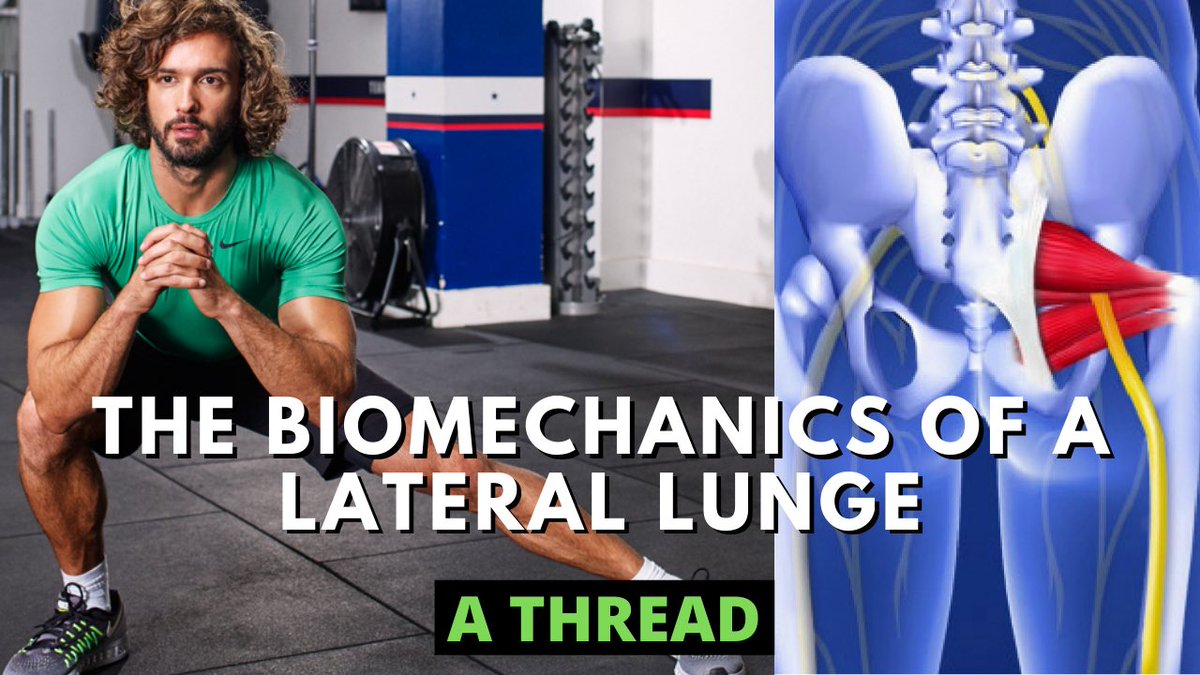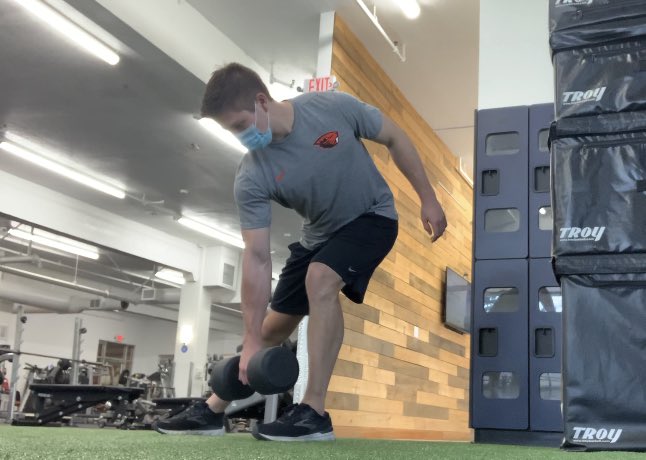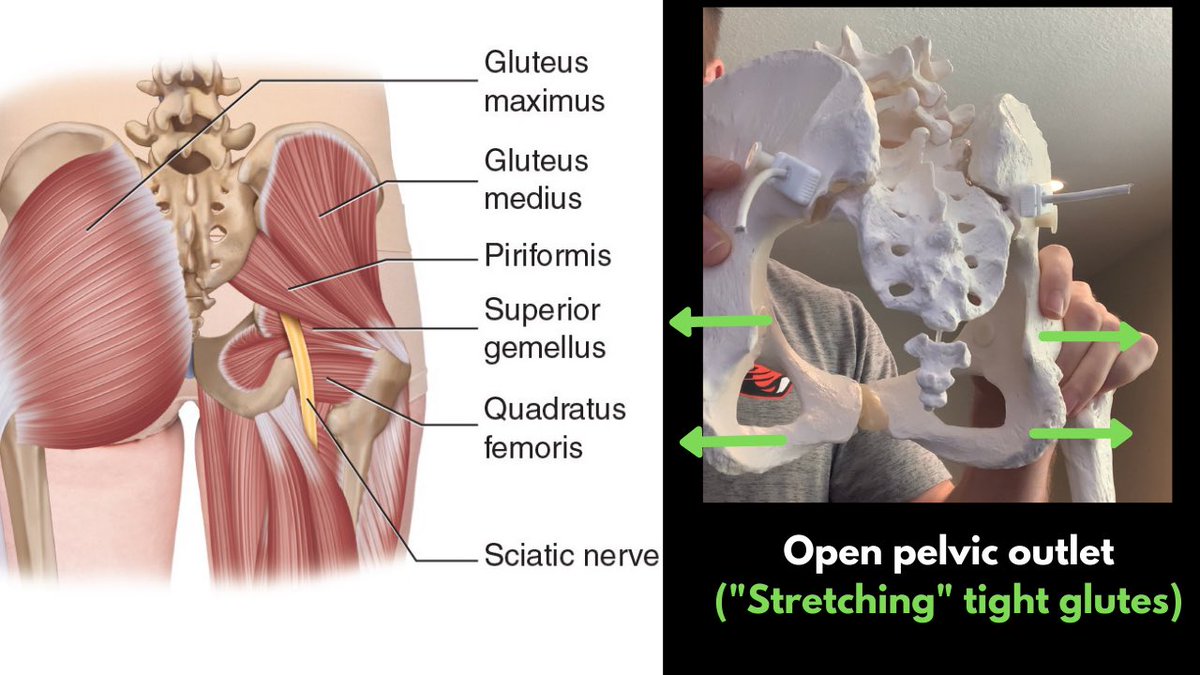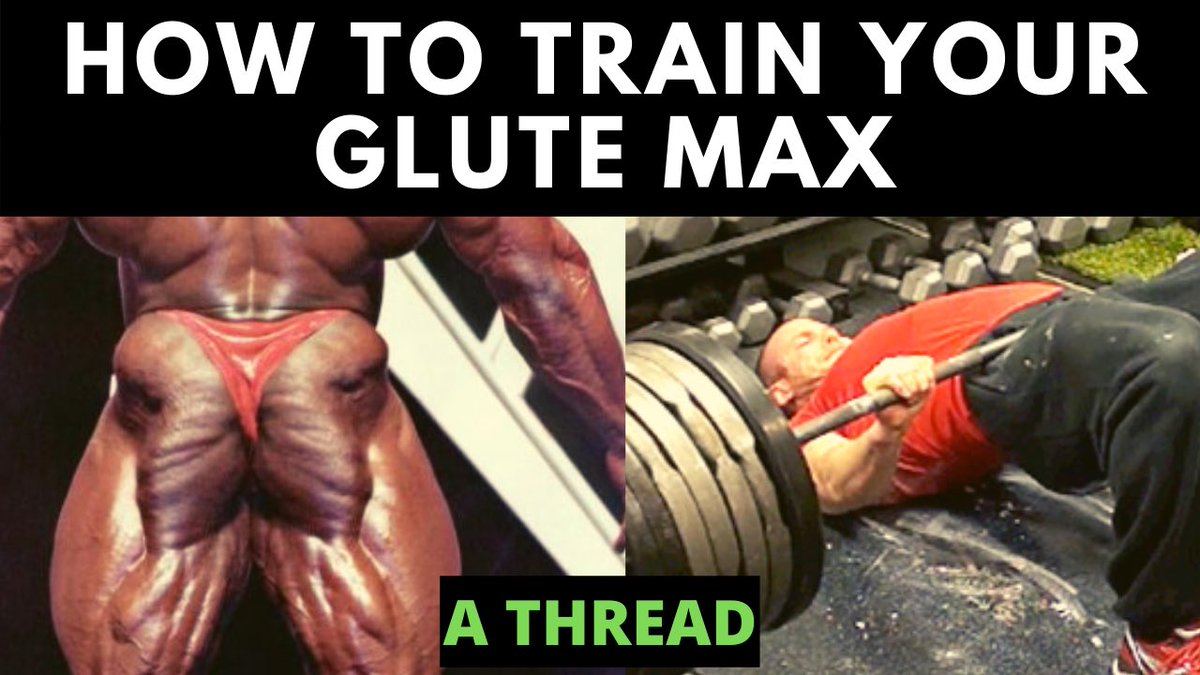
A thread on Box Squats & their use for improving pelvic mechanics, a squat pattern, & force output
Box squats are often used as a means to improve squat strength.
In addition to that, a deeper look into the biomechanics can help us appreciate contextual application of them...
Box squats are often used as a means to improve squat strength.
In addition to that, a deeper look into the biomechanics can help us appreciate contextual application of them...

The first thing to consider is that box squats usually stop at ~90 degrees of hip flexion, which is associated with high degrees of internal rotation of the hips.
At this point, the sacrum bone tips forward and the pelvic bones rotate inward for femurs (leg bones) to pick up
At this point, the sacrum bone tips forward and the pelvic bones rotate inward for femurs (leg bones) to pick up

room to move back into internal rotation.
This is necessary for producing force through the sticking point of a squat.
When someone is lacking proper internal rotation of the hips, you’ll often see them push their hips forward and arch their low back.
This anterior orientation
This is necessary for producing force through the sticking point of a squat.
When someone is lacking proper internal rotation of the hips, you’ll often see them push their hips forward and arch their low back.
This anterior orientation

allows the femurs to pick up internal rotation, but if taken too far, can put increased stress on the low back.
Also, trainees who are missing IR of the hips often “fall through” or drop without control into the bottom of a squat as they create a strategy to bypass IR.
Also, trainees who are missing IR of the hips often “fall through” or drop without control into the bottom of a squat as they create a strategy to bypass IR.

So if I had someone who lacks IR (more on that later), or struggles to produce force through the sticking point of a squat, the box squat is an appropriate choice. 
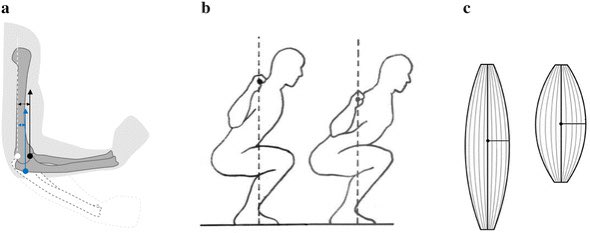
There are a few ways to use box squats:
1. Anterior load - This can help the individual maintain an more neutral spine and helps prevent them from overly arching their low back
1. Anterior load - This can help the individual maintain an more neutral spine and helps prevent them from overly arching their low back
2. Posterior load - Better for higher-output squats and more specific carryover to a back squat
3. Adding a ball between the knees - This is better for more of a “prep” drill, but adding a ball that keeps the knees in-line with the toes can allow for the individual to bias pelvic IR if they struggle to access it.
As a bonus activity, you can also use a box for a tool to teach a power output via a vertical jump from a 90 degree box.
Because there is no counter-movement involved here, this would be an initial beginner progression to teach someone to produce force rapidly through hip IR.
Because there is no counter-movement involved here, this would be an initial beginner progression to teach someone to produce force rapidly through hip IR.
How do you know if someone is missing hip IR? A few ways:
1.) A femoral IR test (pictured below)
2.) An active straight leg raise assessment can also be used as a hip and femoral IR test. I go into deep detail on there here:
1.) A femoral IR test (pictured below)
2.) An active straight leg raise assessment can also be used as a hip and femoral IR test. I go into deep detail on there here:
https://twitter.com/Conor_Harris_/status/1270416677641916416

You can also read more about the importance of hip internal rotation as it relates to athletics, the weightroom, and human movement here:
https://twitter.com/conor_harris_/status/1317219020299366401
• • •
Missing some Tweet in this thread? You can try to
force a refresh

